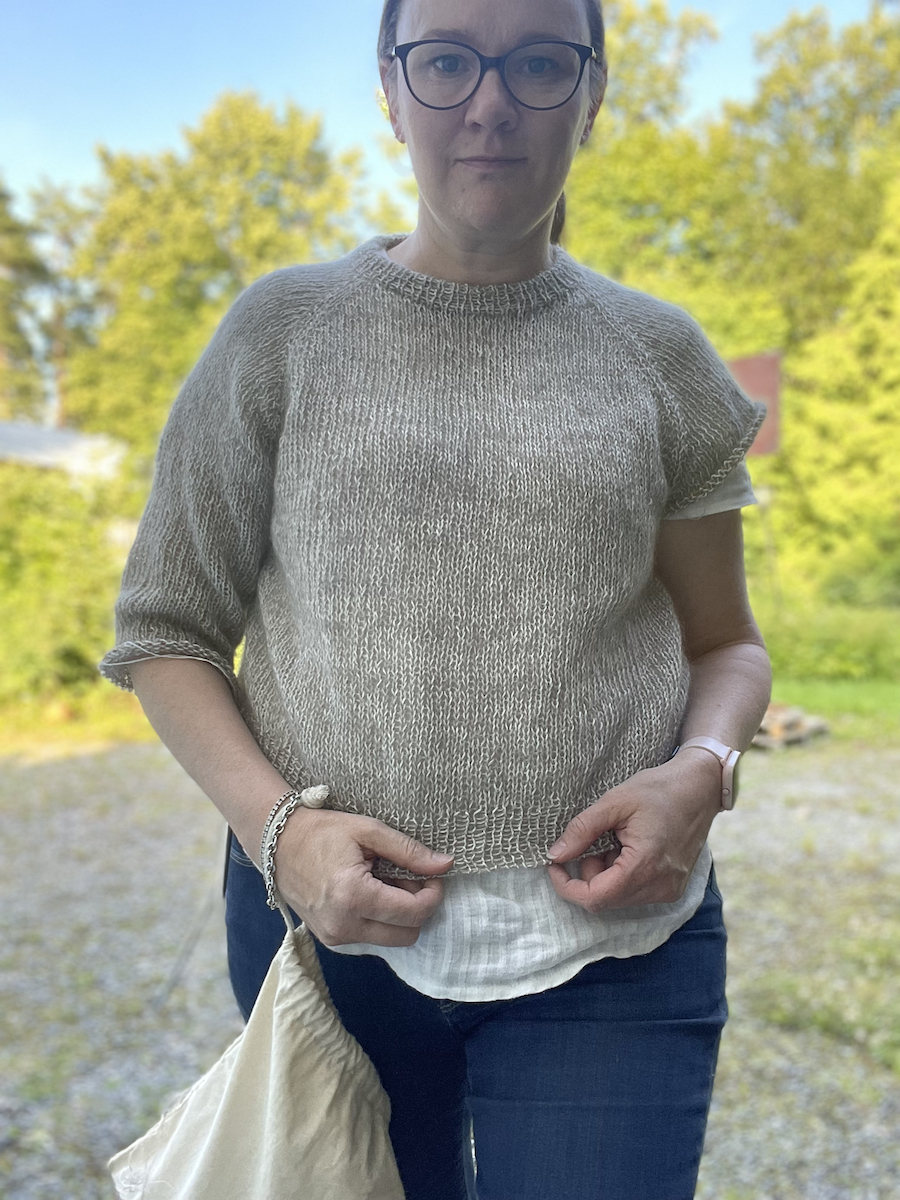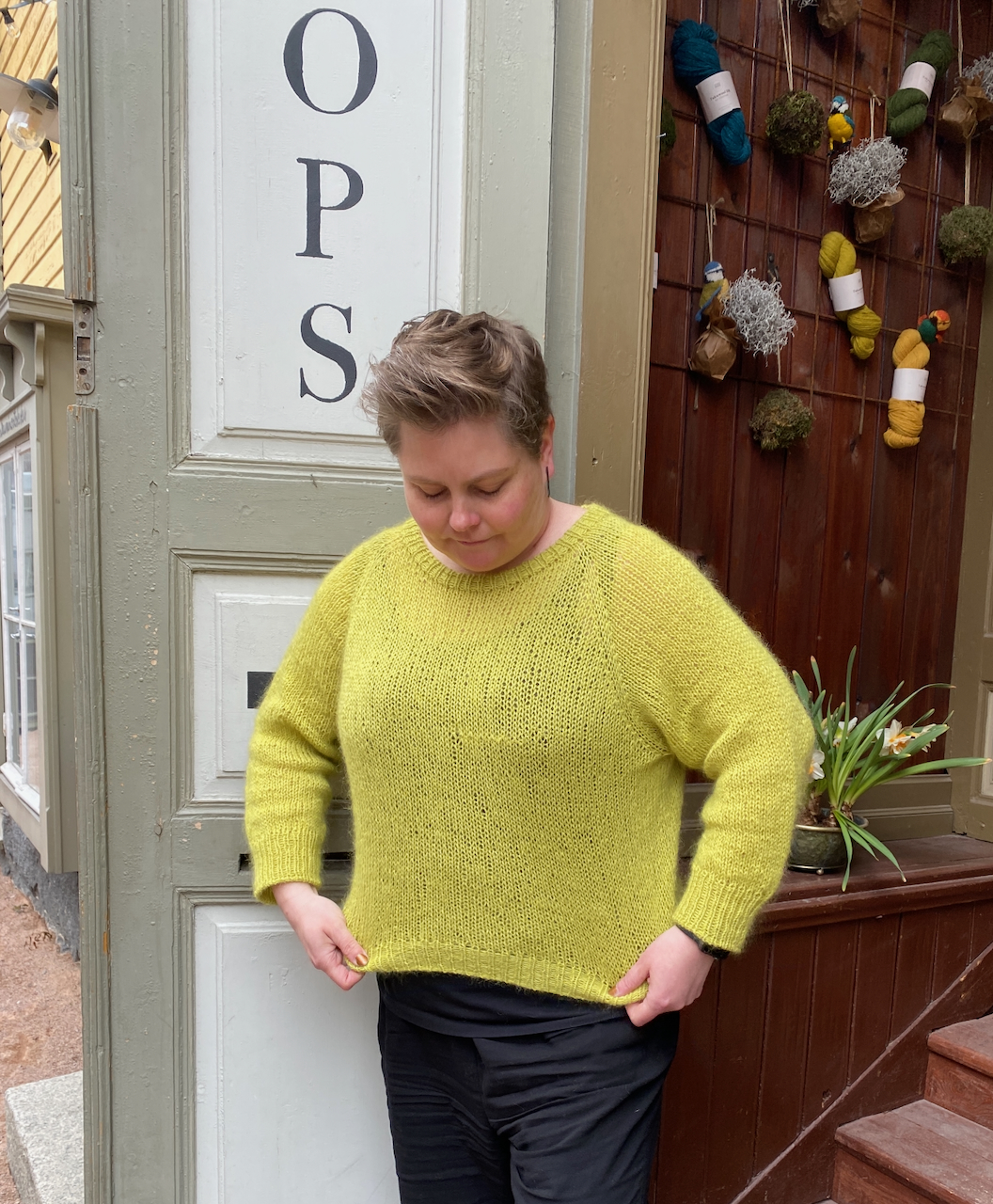- Knitting Yarns Knitting Yarns
-
Brands
Brands
- All brands
-
Addi
›
-
Anna Johanna
›
-
Anchor
›
-
Austermann
›
-
ChiaoGoo
›
-
Clover
›
-
CocoKnits
›
-
Cozy Publishing
›
-
De Rerum Natura
›
-
Dill
›
-
DMC
›
-
Eucalan
›
-
Filcolana
›
-
Gepard Garn
›
-
Hjertegarn
›
-
Holst Garn
›
-
Isager
›
-
Istex
›
-
ITO
›
-
Jenna K. Ihtririekkoknits
›
-
Katia
›
-
Katrinkles
›
-
Knit Pro
›
-
Knitting For Olive
›
-
Kremke Soul Wool
›
-
La Bien Aimee
›
-
Laines du Nord
›
-
Lana Gatto
›
-
Laine Publishing
›
-
Lang Yarns
›
-
Louhittaren Luola
›
-
Lykke Crafts
›
-
Malabrigo
›
-
Markus Company
›
-
Muud
›
-
Noro Yarns
›
-
Neuloosisko
›
-
Opry
›
-
PetiteKnit
›
-
Pom Pom Publishing Ltd.
›
-
Prym
›
-
Regia
›
-
Sandnes Garn
›
-
Schachenmayr
›
-
Scheepjes
›
-
Sesia
›
-
Schoppel-Wolle
›
-
Skein Queen
›
-
Steamery
›
-
Succaplokki
›
-
Sweater Stone Inc.
›
-
Taito
›
-
The Knitting Barber
›
-
Titityy
›
-
Tukuwool
›
- Knitting Needles and Crochet Hooks Knitting Needles and Crochet Hooks
- Knitting and Crochet Patterns Knitting and Crochet Patterns
-
Supplies and Notions
Supplies and Notions
- All supplies and notions
-
Finishing, Washing & Blocking
›
-
Project Bags and Pouches
›
-
Yarn Winders and Swifts
›
-
Needle Storage
›
-
Chart keepers and notebooks
›
-
Stitch Holders
›
-
Stitch markers
›
-
Labels
›
-
Embroidery and Punch Needles
›
-
Measuring tape
›
- Buttons and Clasps ›
-
Lint Removers
›
-
Pins
›
-
Needle Gauge and protectors
›
-
Scissors
›
-
Tools
›
- Yarn Kits Yarn Kits
- Gift Ideas Gift Ideas
- Events Events
- Outlet Outlet
- Gift Card Gift Card
-
Blog
Blog
- All blog
-
Best Patterns for Knitting for Olive Yarns
›
-
Hopeatiuku Shawl MKAL for Tukuwool Fingering
›
-
New Pattern from Anna Johanna - Timjami
›
-
Suositut norjalaiset neuleet
›
-
Pohjolan emäntä - new pattern for Tukuwool Fingering
›
-
December shipping
›
-
Maxi Soft beanie - Free pattern
›
-
Knit Love Unite Shawl
›
-
Knitwear care
›
-
Yarn suggestion for Laine Magazine Issue 12 Hav
›
-
How is the Tukuwool DK knit-a-along going?
›
-
Fee pattern in April from Sandnes Garn
›
-
Seashore Cowl is a Fall Favorite
›
-
Crochet Cotton Pads Free Pattern in Finnish
›
-
Pohjolan emäntä - new pattern for Tukuwool Fingering *
›
-
For the love of Finnish wool
›
-
Lankavinkkejä Laine Magazine issue 11 Meiramiin!
›
-
English to Finnish Knitting Vocabulary
›
-
Lankaideoita Laine Magazine issue 10 -lehteen
›
-
Urban Knit - moderni neulekirja
›
-
Villapesuohjelman kesähuiviin lankasettejä
›
-
Kevät Fingerless Mittens Pattern PDF
›
-
Ideas to summer knits!
›
-
Onni shawl for Tukuwool Hakamaa Fingering!
›
-
Toivola MKAL begins in July!
›
-
Kotimaisesta villasta ja Tukuwoolin tuotantoketjusta
›
-
Léttlopi and Riddari craze!
›
-
Lankoja Tikkuripaitaan
›
- FAQ FAQ
Austermann
De Rerum Natura
FIL KATIA S.A.
Filcolana
Gepard Garn
Hjertegarn
Holst Garn
Isager
Ito Yarn
Knitting For Olive
Kremke Soul Wool
La Bien Aimee
Laines du Nord
Lana Gatto
Lang Yarns
Lopi
Louhittaren Luola
Markus Company
Noro
Sandnes Garn
Schachenmayr
Scheepjes
Schoppel-Wolle
Sesia
Skein Queen
Tukuwool
Anchor
Blockwallah
ChiaoGoo
Clover
Cocoknits
Cozy Publishing
De Bondt B.V.
Dill
DMC
Eucalan
FIL KATIA S.A.
Ito Yarn
Jim Knopf
Katrinkles
KnitPro
Kremke Soul Wool
Lopi
Lykke Crafts
Markus Company
Muud
Opry
PetiteKnit
Prym
Sandnes Garn
Scheepjes
Steamery
Strikkefeber
Sweater Stone
The Knitting Barber
Titityy
Tmi Succaplokki
Tukuwool
Knit! Lento sweater - Part 3
Julkaistu: 30.01.2023
If you forgot what we are talking about, read part 1 and part 2 first.
Divide the body and sleeves
Once you are done with the raglan increases you divide the body and the sleeves. Place the stated sleeve stitches on scrap yarn or use the awesome TKB cords and cast on new stitches (as many as stated)with backwards cast on method under the armholes (on both sides.
Continue with the body, it’s all smooth sailing from here. Knit until stated or desired length minus the ribbing. Then change back to smaller needles, knit ribbing as instructed and bind off using the Tubular Bind Off method.
A note about the Tubular Bind Off. In many tutorials it says to leave a yarn tail four times as long as the circumference/width of the stitches to be cast off. I never used that much yarn. Three times is more than enough. Check Tiina's video on how to Tubular bind off. (It's in Finnish, but hopefully clear enough. )
Sleeves
Pick up the stitches for sleeves from scrap yarn or TKB cords. There is also mention of picking up stitches from the armhole, do that too. Join the yarn and start to knit in the round, on larger needles.

Siina’s Lento, here still on the needles from Lana Gatto Fresh and Isager Silk Mohair.
As this might be your first sweater you might not know if you tend to knit sleeves on a tighter gauge than the body of a sweater. However, if you notice this a few inches in, unravel and change to larger needles, 0.25 mm or even 0.5 mm larger. Somehow knitting smaller circumferences might make your gauge tighter. It happens to the best of us, not to worry! If you have the opposite problem (suppose that can happen too), well go down a needle size.
Knit the sleeve decreases as stated in the pattern. Once you have the desired length, change to smaller needles. Knit ribbing for stated or desired length. Cast off using Tubular Cast Off. Knit the 2nd sleeve the same!

Kati in her winter Lento from Peruvian Highland Wool.
Finishing
This might be a matter of taste, but I do not weave in any ends before I wash my sweaters and let them dry. Why? I think that the yarn ends will stick out less this way, or maybe it’s more of a habit. Anyway, weave in the ends at some point!
Place your sweater into a sink with wool wash and let it soak for 15 mins. (use cold or lukewarm water). Squeeze out as much of the water as you can, wrap your sweater in a clean, dry towel. Dance on top of it! (You can skip this step :) )
Lay your sweater flat to dry! It is really important to lay the sweater flat to dry, to avoid stretching it too much. Check the measurement of the sweater against the given measurements for your size in the pattern. Smooth all possible wrinkles, use a measuring tape to check that you don’t stretch the wet sweater too much.
I do not block my sweaters much unless it is of a lace kind. (The lace needs to be blocked in order for it to show properly.) With a stockinette sweater I just lay it flat to dry, and like I said above, smoothen any wrinkles, and wait for it to dry completely. Put it on, give yourself a well deserved tap on the back, you’ve just made a sweater!

Tiina’s Lento number 2, made from Sunday and Tynn Silk Mohair.
Final notes
Knitting is mostly fun, but like any hobby or skill, it might not be fun in the beginning. Yet each unravelled stitch teaches you something, and I promise if you practise, you’ll improve, not just as a knitter, but maybe also as a person.
Happy sweater knitting!
- Titityy flock
Chunky Sweater Patterns for Brushed, Bulky Yarns (19.03.2024)
Isager Archives Collection Knits 2024 (08.03.2024)
Guide to Choosing Double Pointed Needles for Socks (26.02.2024)
Titityy Favorite Mittens Lempilapaset (08.02.2024)
Tukuwool Sock Yarn is Back with Sustainable Revelation (01.02.2024)
Filcolana Knitting Pattern Collection NORDIC DESIGN (13.11.2023)
The best Muud for knitting (03.11.2023)
Explore Color Fade Yarn Kits (15.09.2023)
Best Patterns for Knitting for Olive Yarns (02.08.2023)
Knitting Patterns Inspiraatio
Follow us
SUBSCRIBE TO TITITYY ENGLISH NEWSLETTER
New email subscriber benefit: 20% discount on Finnish Wool - subscribe now!
Your LYS worldwide
Fast worldwide shipping!
DHL Express shipping usually in 1-2 days!
Outside EU?
Choose your shipping country to show prices without VAT.
Customer Service in English
We are happy to help you!
info@titityy.fi


Shop in English
Fast worldwide shipping by DHL Express!
Visit us
Yarn Shop Titityy
Cygnaeuksenkatu 2
40100 Jyväskylä
FINLAND
Phone +358 40 487 4779
MON - FRI 10 - 18
SAT 10 - 16
SHOPPING TOOLS



